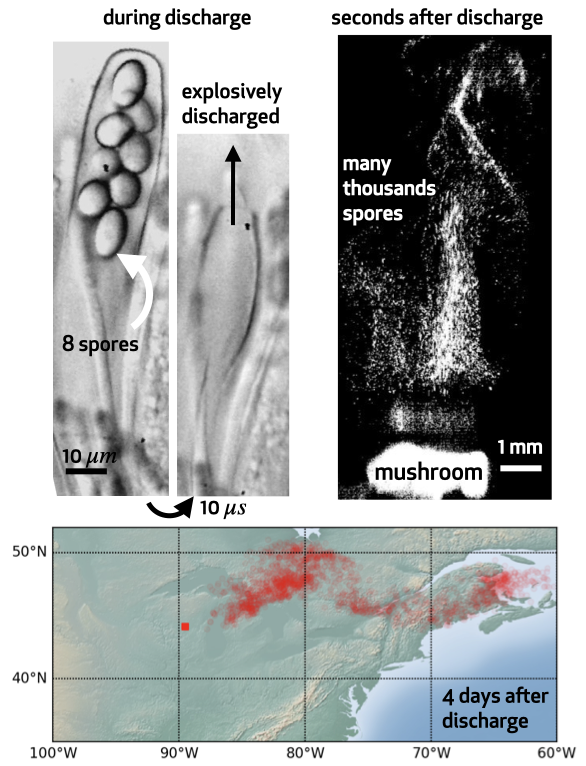
|
Microscopic spores allow higher fungi to disperse between ephemeral habitats. Spore range is an important factor in a species evolutionary success, since the probability of spore germination depends on the environment where it eventually lands. Although no range of dispersal can guarantee success, there is at least one important constraint that spores need to fullfill in order to germinate: they need not fall back on the parent fungus. This might seem quite an easy task, especially if we consider that spores are launched at enormous velocities that range from 1 m/s to even 20 m/s and corresponding accelerations of 10^5 g.
However, at the micron scale air drag severely thwart particle dynamics and spores are decelerated to rest after travelling only few mm. This ballistic range is not large enough to cross the boundary layer of still air that surrounds the fruit body. For species that rely on wind to disperse their propagules this
is a major obstacle, because spores that do not cross the boundary layer cannot be entrained by the dispersive air flows and eventually
fall back on the parent fungus. We proposed that the microscopic mechanisms of spore discharge are optimized to ensure spores effectively
disperse beyond the parent fungus. But the fate of a spore is ultimately dictated by atmospheric transport which is highly stochastic and beyond
control of an individual fungus. We currently focus on spore dispersal in the atmosphere, to understand what strategies can be put
in place to release spores at times that maximize their chances of survival. To this end, we use machine learning coupled to simulations and models of
atmospheric transport to ask whether features of a particle trajectory in the atmosphere can be predicted by conditions at spore release.
|
